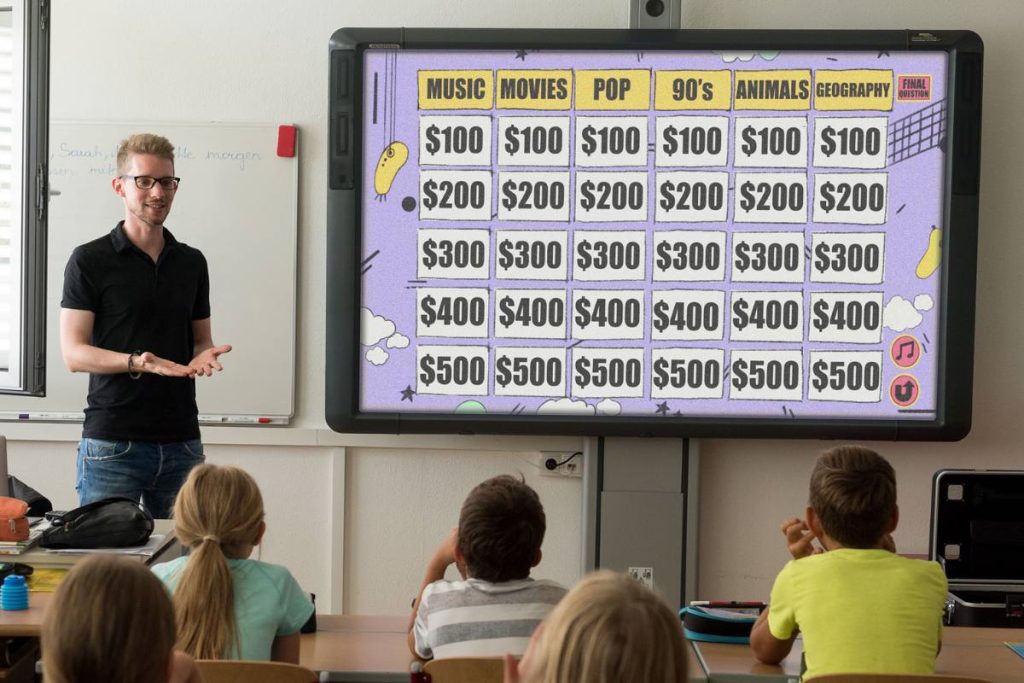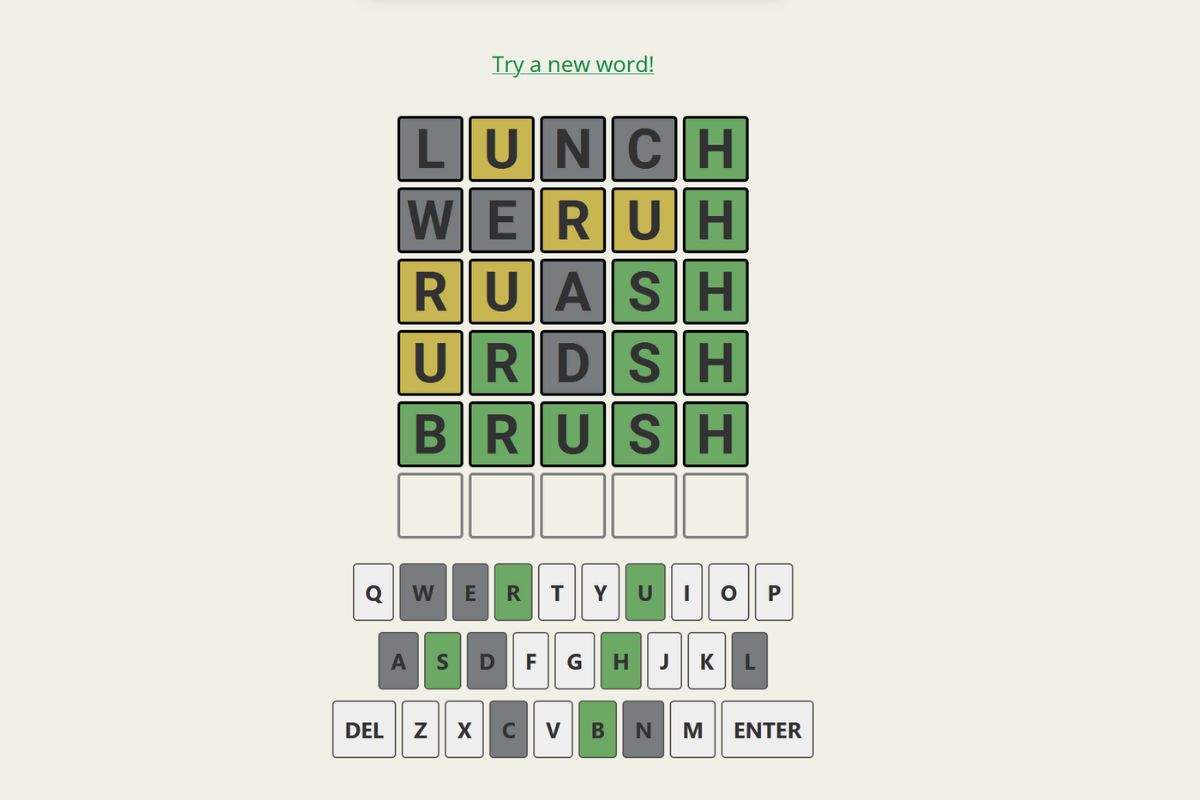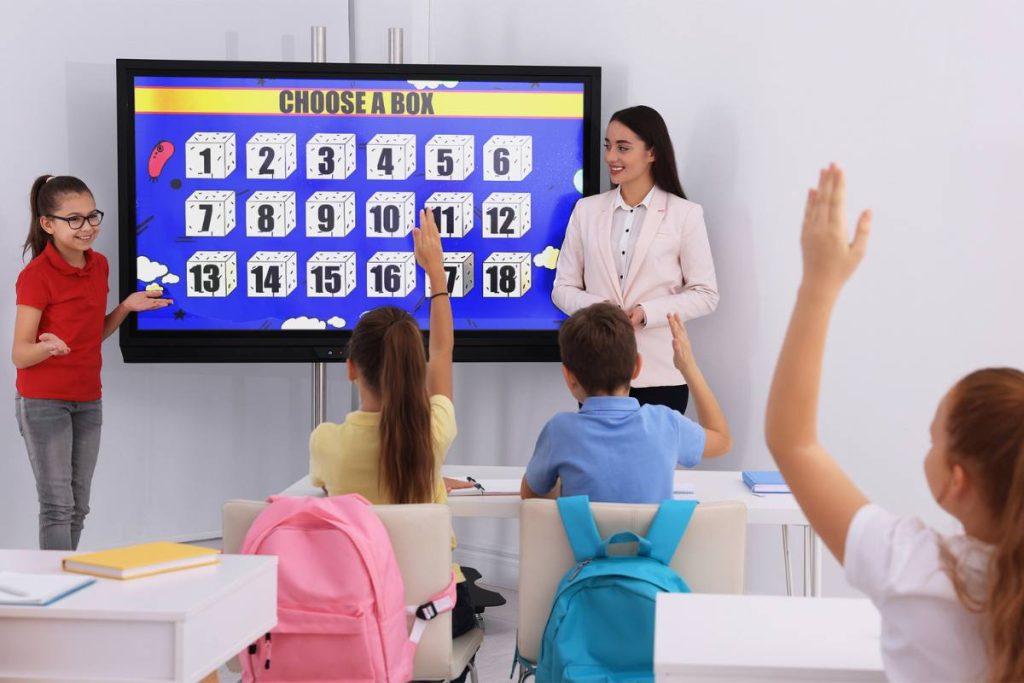A review game is a fun activity to prepare students for tests and to help them with their understanding of the content in class. Classroom review games aim to find ways to get students to answer questions correctly in a way that doesn’t make them feel uncomfortable. It allows them to ask questions, score points for the right answers, and create a unique educational environment. Group activities, whereby students work in teams, are a great way to foster team-building and can also help students with test prep. In this article, you will find a list of the best review games that are fun for students and teachers. But let’s take a look at some of our favorite review games first. You will find more games and more details about the rules of the games further down in this article.
The 12 Best Classroom Review Games
Games are exciting and engaging and make finding the right answer to a question something to strive for. They prepare students for the questions they will find on the exam and make test preparation a social play. Below are our favorite low-prep review games and activities for elementary, middle, and high school.
1. Friendly Feud
 Want a fun group review game for your students? Try the classroom version of “Family Feud”! Here is how to play Friendly Feud in your classroom: First, divide the class into two teams. (Each team will compete against the other to answer review questions.) Next, the teacher shows a question from the Friendly Feud game template (don’t forget to download the “Friendly Feud” PowerPoint game!).
Want a fun group review game for your students? Try the classroom version of “Family Feud”! Here is how to play Friendly Feud in your classroom: First, divide the class into two teams. (Each team will compete against the other to answer review questions.) Next, the teacher shows a question from the Friendly Feud game template (don’t forget to download the “Friendly Feud” PowerPoint game!).
One student from each team then tries to guess the answer. If they are right, their team continues guessing; if not, it is the other team’s turn. Teams earn points based on how popular their answer is, and after three wrong guesses, the other team has a chance to steal points. The game ends when one team has the most points, and for an added twist, the winning team can play a bonus round to guess the top answers quickly. The main goal? Guess the most popular answers and enjoy the game!
2. Classroom Jeopardy
 If you have a smartboard or other type of projection, try this classroom Jeopardy template! First, make sure to download the Jeoparty PowerPoint game template. Then, create Jeopardy questions for the game in categories with monetary values. Next, divide the class into teams. It works great whether you are in a classroom or on a video call with screen sharing.
If you have a smartboard or other type of projection, try this classroom Jeopardy template! First, make sure to download the Jeoparty PowerPoint game template. Then, create Jeopardy questions for the game in categories with monetary values. Next, divide the class into teams. It works great whether you are in a classroom or on a video call with screen sharing.
The game rules are simple. A team selects a category and point value, and the teacher reveals a question by clicking on it. Students get a limited time to answer. The teacher can show the correct answer using a button on the slide. If the team’s answer matches, they get the points, and scores are tracked on a scoreboard. After each turn, you will go back to the main question board. Keep playing until all questions are picked. The aim? Answer correctly and rack up points! Watch the video below to see how to customize and use the Jeopardy template.
3. Classroom Wordle
 This Classroom Wordle for students is a fun game to test vocabulary, suitable for teachers to use in any grade. Playing Classroom Wordle online is super fun to play and easy to set up. Students guess a 5-letter word and type it into the first row of the 5×6 tiles. Tiles will change colors based on your guess: grey means the letter isn’t in the word, yellow means it’s in the word but in the wrong spot, and green means it’s correct and in the right place.
This Classroom Wordle for students is a fun game to test vocabulary, suitable for teachers to use in any grade. Playing Classroom Wordle online is super fun to play and easy to set up. Students guess a 5-letter word and type it into the first row of the 5×6 tiles. Tiles will change colors based on your guess: grey means the letter isn’t in the word, yellow means it’s in the word but in the wrong spot, and green means it’s correct and in the right place.
Players have six tries to guess the word. If they get it before then, they win! If not, the word is revealed at the end. Each new turn brings a fresh word to guess. Students can play the quiz game individually on phones, classroom tablets, or as a group activity in class.
You can create your own online Wordle game here. You can play classroom Wordle unlimited times with your students in these three fun ways:
- Fastest Fingers: Students play individually on their phones and the quickest to guess the word wins.
- The Closest Letters: Assign points for each correct letter guessed; green letters earn more, yellow letters less. The student with the most points wins, even if they don’t guess the word correctly.
- The Whole Class: Use Wordle as a fun, engaging way to start vocabulary exercises by having everyone play together. It’s a great warm-up or just a fun activity for the class.
4. Mystery Box Game
 The Mystery Box Game is designed for review sessions and test prep. This game is all about choices and surprises and is perfect for any grade or subject. Before you begin, download the Mystery Box PowerPoint template and customize the questions to suit your lesson or topic before you start playing. Playing the game is easy. Students pick a box and answer its question. If the answer is correct, they decide to keep the box or pass it on. Not all boxes are created equal; some might boost their score, while others could set them back. Watch this video tutorial to understand how to make your own Mystery Box game with this template for your students:
The Mystery Box Game is designed for review sessions and test prep. This game is all about choices and surprises and is perfect for any grade or subject. Before you begin, download the Mystery Box PowerPoint template and customize the questions to suit your lesson or topic before you start playing. Playing the game is easy. Students pick a box and answer its question. If the answer is correct, they decide to keep the box or pass it on. Not all boxes are created equal; some might boost their score, while others could set them back. Watch this video tutorial to understand how to make your own Mystery Box game with this template for your students:
5. Hot Seat
One student sits at the front of the class with their back to the board, unable to see the term written behind them. The rest of the class sees the word and must help the student guess it by giving clues—without saying the word itself. The student in the “hot seat” can call on up to three classmates for hints. If they guess correctly, another student takes the seat, keeping the game moving. If they don’t guess, a new student takes their place.
You can use the Password game template, which provides a structured format for clue-giving and makes it easier to run the game.
6. Pass the Chicken
The class sits in a circle, and one student is asked a question while a rubber chicken (or any object you choose) is passed around the circle. The challenge is for the student to answer before the chicken makes it all the way back to them. If they answer correctly in time, they stay in the game; if not, they may have to try again or pass their turn.

7. Ping Pong
The class is split into two teams, and each team collaborates to answer questions posed by the teacher. If they answer correctly, the student who answered gets a chance to toss a ping pong ball into one of three cups placed at the front of the class. If they successfully land the ball in a cup, their team earns bonus points or a small reward.
8. Bingo
Instead of calling out numbers, the teacher uses vocabulary words, math problems, or key concepts from the lesson. Students mark the correct answers on their Bingo cards, and just like the traditional game, they try to complete a row, column, or full card to win. Some teachers add extra excitement by using small prizes or candy as markers.
9. Beach Ball
The teacher writes review questions all over a light-colored inflatable ball. When the ball is tossed to a student, they must look at where their right thumb lands and answer the question closest to that spot. If they answer correctly, they throw the ball to another student, keeping the game moving.
10. Spin the Wheel
The teacher creates a spinning wheel, either using a physical spinner or a digital version, with different review terms, categories, or challenges written on it. A student takes a turn spinning the wheel and must answer a question based on where it lands. Depending on the class size, the teacher can decide whether students play individually or in teams.
11. Hedbanz
Hedbanz is a guessing game that requires no special materials—just sticky notes and a little creativity! The teacher writes review terms, vocabulary words, or key concepts on sticky notes and places them on students’ foreheads so they can’t see their own word. Students take turns asking their teammates yes-or-no questions to figure out what’s written on their forehead. Depending on the class size, students can play in pairs or be divided into two teams.
12. Monopoly Style Game
Each student starts with a set amount of play money, which they use to bet on their ability to answer correctly. The teacher asks a question, and students who feel confident write their answers on a piece of paper and place a wager. If they answer correctly, they win the pot; if multiple students are correct, the winnings are split evenly. If no one answers correctly, the money rolls over to the next round, increasing the stakes. The game continues until one student runs out of money, and the player with the most at the end wins.


